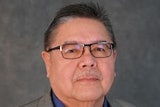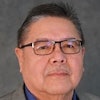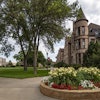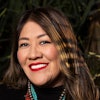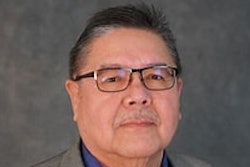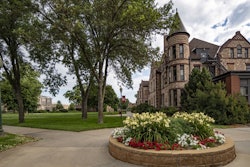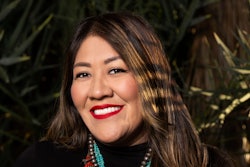Indigenous Ways of Knowing has been making its way out of tribal colleges into mainstream universities, but this method of teaching has its critics.
Indigenous or native ways of knowing, indigenous knowledge, indigenous science, traditional ecological knowledge are terms that have been making their way out of tribal colleges and into mainstream universities in recent years. What exactly do they mean?
According to Dr. Dawn Adrian Adams, Choctaw, founder of Tapestry Institute, these terms refer to two separate, yet intertwined endeavors, epistemology or types of knowledge and pedagogy, methods of teaching and learning. Tapestry Institute is a think tank of elders, artists, scientists and scholars who research and advocate an indigenous worldview. Adams insists that diversity is the power of their groups, and that the institute focuses on studying the natural world and reconnecting people to it.
Dr. Lori Lambert, of the Mi’kmaq/Abenake tribes, e-learning trainer for online faculty at Salish Kootenai College, a tribal college in Montana, defines tribal knowledge or science as scientific skills that native people have valued and used for generations to discover the dependable way things work in their world. Indigenous knowledge is also deeply rooted in place and tied to culture; it includes beliefs, values and practices that are usually passed along orally.
Indigenous ways of knowing, according to Adams, refers to pedagogy. IWOK often uses stories to engage learners and emphasizes the notion of community in the process. Strictly speaking, IWOK is focused on the process of learning rather than the outcome and emphasizes the holistic understanding of a topic or situation. Adams maintains that a science class taught from the mainstream Western perspective would be primarily focused on clear-cut outcomes.
Instructors at tribal colleges found early on that American Indian students did not respond well to traditional Western instruction; rather, they were better able to grasp STEM-related theories when the information was presented in a more handson, demonstrative style. For instance, Lambert, who teaches environmental and health sciences, does not rely on lecturing to convey lessons; she often tells stories and makes analogies to culturally meaningful activities in students’ lives.
“I build a relationship to what is known and what is going to be known in the class,” she says.
She explains the human integumentary system, the external covering of the body, by making an analogy to sewing a traditional buckskin dress.
Critics of such knowledge systems claim that they conflict with the positivist heritage of science. Dr. Noretta Koertge, professor emeritus in the department of history and philosophy of science at Indiana University, Bloomington, is the editor of A House Built on Sand: Exposing Postmodernist Myths About Science. In an interview with Friedrich Stadler discussing what they describe as “the science wars,” Koertge criticizes some new knowledge systems for viewing science as a cultural enterprise like religion, ideology or the arts. “Scientific knowledge is the best knowledge that we have,” she states.
Those working within indigenous knowledge frameworks, however, maintain that there are far more commonalities with Western science than differences.
“Indigenous knowledge and ‘Big Science’ have been cast in opposition, which is a mistake. That divisiveness is more about power and politics,” says Dr. Megan Bang, postdoctoral researcher at the Technical Education Research Center in Cambridge, Mass.
Opponents would make the claim that indigenous knowledge is devoid of empiricism, which is not true, adds Bang. She points out that astronomy, like indigenous science, is deeply observational.
“Our people used the same tenets in pursuit of knowledge that scientists use when setting up a study. They began with careful observation and made hunches regarding probable outcomes,” says Lambert.
Mainstream schools are already using elements of IWOK without realizing it, according to Adams. Learning in community, authentic learning, learning through inquiry, etc., are all structured like IWOK. Authentic learning, for instance, allows students to explore and discuss concepts in contexts involving real-world problems and projects. All these approaches use a portfolio system to assess what the students have learned for themselves through inquiry.
According to Adams, the main stumbling block to IWOK in the traditional Western academy is assessment. Current standardized tests are in the Western system of education, demanding reductionism. In IWOK, the teacher’s responsibility becomes more about helping students than simply ranking them, she says. IWOK encourages students to develop inner authority and helps them to connect the dots and relate to other information.
IWOK proponents claim that this learning style helps all students as they face an increasingly multicultural and complex world. The IWOK project in the Oregon Center for Inquiry and Social Innovation at Lewis and Clark College states in its goals that the program will prepare students to live and be of service in a world where multiple voices, multiple cultures and multiple ways of knowing are central to successful, lifelong professional growth and service.
Dr. Douglas Medin, professor of cognitive psychology at Northwestern University, uses IWOK in his graduate courses and has seen positive responses from students as well as colleagues. In the course “Culture and Cognition,” Medin asked students to produce a response to readings that included something about their own experiences with Western science education. He did not limit their responses to written expression. A student from the Menominee tribe created a drawing of a turtle that represented her clan, integrating images of her culture and childhood with images of microscopes. According to Medin, the drawing indicated that science learning and culture should be like the turtle, which holds up the earth in Menominee creation stories. “It was powerful and dramatic,” Medin recalls.
The Scientific Disconnect
Adams speculates that interest in indigenous science and IWOK has increased among mainstream educators and scientists because the world is facing a crisis.
“We need the wisdom of indigenous elders. The problems we face today such as ecological and environmental damage, unhealthy foods and health issues all stem from the disconnect to knowledge that students internalize in the Western school setting,” she says.
Bang echoes these sentiments.
“There is a disconnect between the scientific advances we have made and the impact they have had on us and the globe.” The crisis in Western science education, she states, is the false notion of objectivity, which then conveys the false sense of control over the world. Extrapolating the results of an experiment done in a controlled environment out into the world has led to many of the ecological, environmental and health problems faced by the planet today.
“Western science thought we could step outside of the world and analyze it without our own participation,” she says.
Indigenous knowledge, however, is based on a community of responsibility and connectedness. Bang observes that more mainstream scientists are beginning to see the advantages of indigenous knowledge.
“Either we are going to have to learn to do things differently or move on to Mars or some other planet after we destroy the earth and begin again,” she concludes. Adams cautions that simply including elements of indigenous knowledge into an existing curriculum will do little. “Diversity of content isn’t going to ask new questions or come up with new ways of looking at the world.”
Indigenous knowledge, she says, then becomes a corpse when it is excised from place. By the time it gets to students, it becomes simply an oddity and leads to misappropriation.
The process of IWOK, Adams claims, changes the way we look at the world and our relationship in it. The way an indigenous person looks at the world includes the full range of understanding and response; part of the knowing is how one responds. IWOK encourages students to develop inner authority and helps them to connect the dots and relate to other information.
Click here to post and read comments
© Copyright 2005 by DiverseEducation.com
